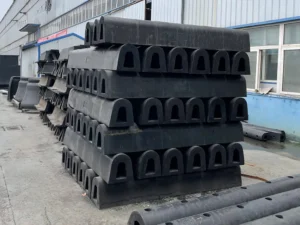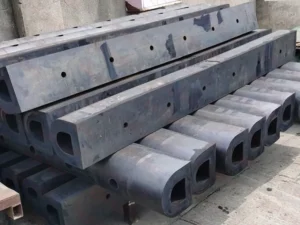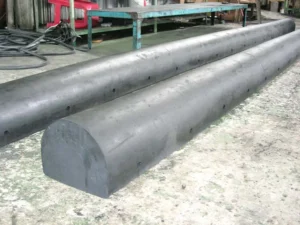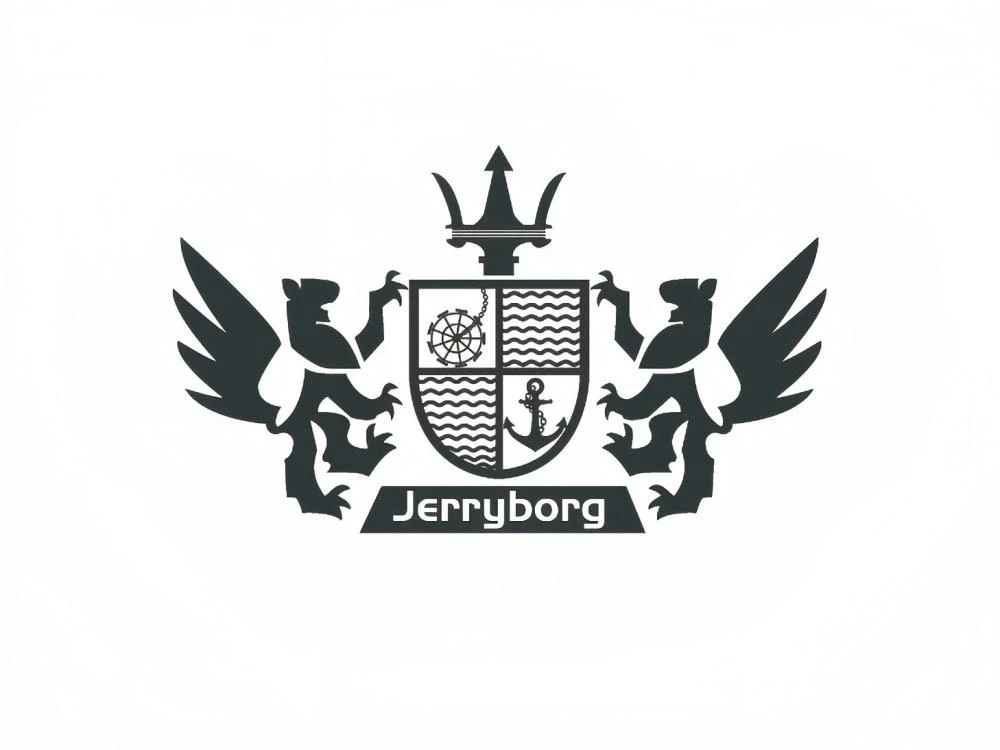Die Bedeutung von Fendern kann nicht hoch genug eingeschätzt werden. Ohne sie wäre die Sicherheit von Schiffen und Booten in Frage gestellt. Es gibt verschiedene Arten von Fendern. Unter diesen sind die D-Fender sehr effizient. Es stellt sich jedoch die Frage: Wofür werden Gummi-D-Fender verwendet? Diese Frage stelle ich mir täglich.
Viele Menschen denken, dass verschiedene Arten von Fender unterschiedliche Funktionen haben. Das ist falsch, denn alle Fender für die Schifffahrt schützen das Schiff. Wie sie die Schiffe schützen, unterscheidet sie jedoch voneinander. Diese D-Fender haben ihren Namen von ihrer D-Form. Lassen Sie uns in die Tiefe gehen und diese Fender im Detail besprechen.
Übersicht über die D-Fender

Fender sind Gummipuffer, die Schiffe schützen. Sie verbleiben normalerweise an den Seiten des Schiffes. Wenn ein Schiff andockt, stoßen diese D-förmigen Fender nicht mit dem Schiffskörper, sondern mit der Andockstruktur zusammen. Sie sind komprimierbar und absorbieren den Stoß.
Diese Kollision hat keinerlei Auswirkungen auf die Schiffskörper. Die Fender haben eine Auswirkung auf sie. Die Form dieser Fender ähnelt dem Alphabet "D". Deshalb werden sie auch als D-Fender bezeichnet. Die meisten dieser Fender bestehen aus Gummimaterialien. Was diese Fender so beliebt macht, ist ihre hohe Kapazität, Stöße zu absorbieren.
Sie verwenden hochwertiges Gummi. Bei Zusammenstößen absorbiert dieser Gummi die Aufprallkräfte. Der Gummi bietet außerdem eine hohe Reibungsfestigkeit. Auch die Form der Kotflügel ist hervorragend geeignet, um starke Stöße zu absorbieren. Die flache Seite dieser Schutzbleche bietet eine größere Kontaktfläche. Dies gewährleistet ihre hervorragende Leistung.
Form und Struktur der D-Fender

Die Form der D-Kotflügel ist etwas, das sie sehr effizient macht. Wie Sie wissen, gibt es verschiedene Arten von Kotflügeln. Ihre Formen sind jedoch willkürlich, und sie tragen nicht zur Leistung der Fender bei. Diese D-Kotflügel haben jedoch zwei Seiten oder Facetten. Schauen wir uns diese genauer an und diskutieren sie.
1- Vorderseite
Die Vorderseite dieser Fender ist flach. Sie bietet eine maximale Kontaktfläche beim Aufprall auf die Andockstruktur. Diese flache Vorderseite sorgt dafür, dass die Fender den größten Teil der Schiffsfläche abdecken. Aufgrund der großen flachen Oberfläche absorbieren und verteilen diese Fender die Aufprallkraft effizient. So bleiben sowohl der Fender als auch das Schiff sicher.
1- Gebogener Rücken
Die Rückseite dieser Marine D Fender ist geschwungen. Die gekrümmte Form sorgt dafür, dass sie flexibler ist. Wenn es mit einem Schiff zusammenstößt, wird dieser gekrümmte Bereich zusammengedrückt. Dadurch wird ein Großteil der Aufprallkräfte schnell absorbiert. Dieser gewölbte Teil der D-Fender bleibt an der Außenseite. Wenn also eine massive Kraft auf sie einwirkt, können sie diese problemlos bewältigen. Der geringere Aufprall wird auf den Schiffskörper übertragen.
Anwendung oder Verwendung von D Fendern
Im obigen Abschnitt habe ich einen Überblick über D-Kotflügel gegeben. Unser Hauptthema ist jedoch ihre Verwendung. Lassen Sie uns einige ihrer wichtigsten Anwendungen und Zwecke besprechen.
1- Dockschutz
Fender sind eine hervorragende Option für den Schutz von Docks. Die Benutzer installieren sie an den Anlegestellen oder Strukturen. Einmal installiert, verbleiben sie dort über Jahre hinweg. Wann immer ein Schiff an der Anlegestelle hält, bieten diese Fender Schutz.
Ohne diese kollidiert das Schiff direkt mit der Andockstruktur. Infolgedessen kann die Aufprallkraft die Qualität und Unversehrtheit der Anlegestruktur beeinträchtigen. Viele Schiffe und Boote parken im Allgemeinen regelmäßig an den Docks. Diese D-förmigen Fender schützen die Anlegestelle. Ohne sie wird die Verladestruktur durch brutale Gewalt oder Kollisionen beschädigt.
2- Schutz des Schiffes
Fender sind auch sehr nützlich für den Schutz von Schiffen. Der Betreiber hat sie an den Seiten der Schiffe angebracht, damit sie nicht beschädigt werden, wenn sie mit anderen zusammenstoßen. Stattdessen entfalten diese D-Fender ihre Wirkung auf die bestmögliche Weise.
Die Gummi-D-Fender stoßen zunächst mit dem gegenüberliegenden Objekt zusammen. Dadurch absorbieren diese Fender die Stöße und retten die Schiffe. Obwohl das Schiff immer noch mit dem Stoß konfrontiert wird, ist er nicht sehr stark. Sie können diese Fender auf Booten, Schiffen und großen Schiffen installieren.
Beim Andocken nähern sich die Schiffe in der Regel schnell der Anlegestelle. In diesem Fall würde der Zusammenstoß mit der Andockstruktur das Schiff beschädigen. Diese D-Fender kommen jedoch zwischen die Andockstruktur und das Schiff. Dadurch wirken sie wie eine Barriere oder ein Puffer und absorbieren den Aufprall. So bleiben sowohl die Docks als auch die Schiffe sicher.
3- Be- und Entladebereiche
Stellen Sie sich ein Dock mit einem vollen Terminkalender vor. Lastwagen und Fahrzeuge kommen und gehen, laden oder löschen die Schiffe. Richtig? Bei solchen belebten Docks treten in der Regel Probleme auf, da die Fahrzeuge gegen sie stoßen. Die Struktur des Docks wird durch diese ständigen Stöße beschädigt. Ihre Instandhaltung kann also kostspielig sein.
Deshalb werden an den Rändern der Docks und Ladebuchten D-Fender verwendet. Dadurch wird sichergestellt, dass die Integrität der Docks nicht durch das Anstoßen von Fahrzeugen beeinträchtigt wird. Wenn Fahrzeuge auf die Verladestruktur einwirken, schützen die Fender diese, indem sie die Stöße absorbieren. Heutzutage ist es üblich geworden, D-Fender für Be- und Entladebereiche zu verwenden.
4- Schutz vor rauem Wetter
Es ist nicht falsch, dass Docks immer unter Stress stehen. Die großen Schiffe bleiben während ihres Aufenthalts auf diesen Dockstrukturen liegen. Stellen Sie sich windiges Wetter mit hohen Wellen vor. Dieses schlechte Wetter und der Wind bringen die Schiffe in Bewegung. Auch wenn diese Bewegung nur geringfügig ist, kann sie Auswirkungen auf die Docks haben.
Schiffe können weiterhin mit Andockstrukturen kollidieren. Man kann sagen, dass diese Kollisionen sanft sind. Aber was ist, wenn diese Sanftheit einige Stunden lang anhält? Das würde die Qualität der Andockstruktur beeinträchtigen. Doch die D-Fender installieren die Docks, um die Andockstruktur zu sichern. Sie absorbieren die negativen Auswirkungen.
Kurzer Tipp: Ist Ihnen schon einmal aufgefallen, dass viele Schiffe stundenlang auf Andockplattformen liegen? Sie beschädigen die Struktur der Anlegestelle nicht. Das liegt daran, dass diese Docks D-Fender verwenden. Die Fender absorbieren den Aufprall und lassen das Dock und die Schiffe den Ruck spüren.
Arten von D-Kotflügeln
Es gibt verschiedene Varianten von D-Kotflügeln. Jeder dieser Typen hat seine Vorteile. Die Hauptfunktion aller D-Fender ist jedoch der Schutz von Schiffen und Dockanlagen. Hier besprechen wir ihre Typen.

- Solid D Schutzbleche: Diese Schutzbleche sind sehr haltbar und robust. Der Grund dafür ist, dass ihre Seiten mit Gummi überzogen sind. In einfachen Worten, Gummi ist von allen Seiten vorhanden. So werden die Stoßdämpfungseigenschaften verbessert. Normalerweise sind diese D-Kotflügel teuer und hochwertig. Sie werden in stark frequentierten Docks mit aggressivem Be- und Entladen eingesetzt.
- Hohle D Fender: Wie der Name schon sagt, ist die Mitte dieser Kotflügel hohl. Die Seiten enthalten das Gummi. Dies schützt das Andocken von Schiffen während des Zusammenstoßes. Kleine Boote verwenden diese Art von Fendern, weil sie nicht sehr haltbar sind. Außerdem ist seine Stoßdämpfung begrenzt.
- Stranggepresste D-Kotflügel: Diese Schutzbleche sind einzigartig und können die individuellen Bedürfnisse der Benutzer erfüllen. Sie werden durch Drücken von Gummi hergestellt und bilden einen durchgehenden D-förmigen Streifen. Daher haben diese Fender unterschiedliche Größen. Ein einziges langes Stück Fender deckt alle Kanten der Andockstruktur ab. Es gibt keine Lücke mehr, die bei der Verwendung mehrerer kleinerer Fender entstanden wäre.
- Flügel Typ D Kotflügel: Diese Art von Kotflügeln unterscheidet sich von den anderen in Bezug auf ihre Befestigungsmöglichkeiten. Ihre Ecken sind eher wie Flügel geformt und stehen seitlich ab. So lassen sie sich problemlos an Schiffen oder Dockanlagen befestigen. Aufgrund der größeren Seiten bieten sie eine ausgezeichnete Stabilität bei der Befestigung.
Sind D-Fender es wert?
Ja, die D-Kotflügel sind für ihren Zweck hervorragend geeignet. Ihre Haltbarkeit, Stärke und Stoßdämpfung sind unübertroffen. Sie können an Andockstrukturen oder Schiffen angebracht werden. Vor allem sind sie relativ preiswert, was ein großes Plus ist.
Alles hat Vor- und Nachteile, und diese D-Typ-Kotflügel sind keine Ausnahme. Viele Leute glauben, dass die Form dieser Kotflügel nicht ideal ist. Das hätte man verbessern können. Wenn sie verwendet werden, lassen sie die Schiffe nicht attraktiv oder ansprechend aussehen. Auch die Größe dieser Fender ist nicht optimal.
Fast alle D-Fender sind kleiner als die anderen. Sie müssen also mehrere Fender verwenden, um das gesamte Schiff abzudecken. Das sind einige Nachteile. Aber ich halte sie trotzdem für das beste Angebot. Der Grund dafür ist, dass sie eine hervorragende Stoßdämpfung bieten. Außerdem können sich auch die Besitzer kleinerer Docks diese Fender leisten.
Das Aussehen dieser Schutzbleche hat nichts mit ihrer Funktionalität zu tun. Außerdem sind die kleinen Größen auch kein großes Problem. Da die Preise für diese Fender niedrig sind, können Sie mehrere Fender kaufen. Auf diese Weise können Sie mit Leichtigkeit die gesamte Schiffsseite schützen. Die Vorteile, die diese Fender bieten, überwiegen alle Nachteile.
Schlussfolgerung
Fender sind hervorragende Erfindungen. Ihre Verwendbarkeit hat den Schutz für Docks und Schiffe verbessert. Was sie von anderen Fendern abhebt, ist ihr einzigartiges Design. Der D-förmige Körper sorgt dafür, dass die Fender alle Stöße bestmöglich absorbieren. Außerdem decken diese Fender die meisten Teile des Schiffes ab. Sie können sowohl auf kleinen Booten als auch auf großen Schiffen eingesetzt werden.
